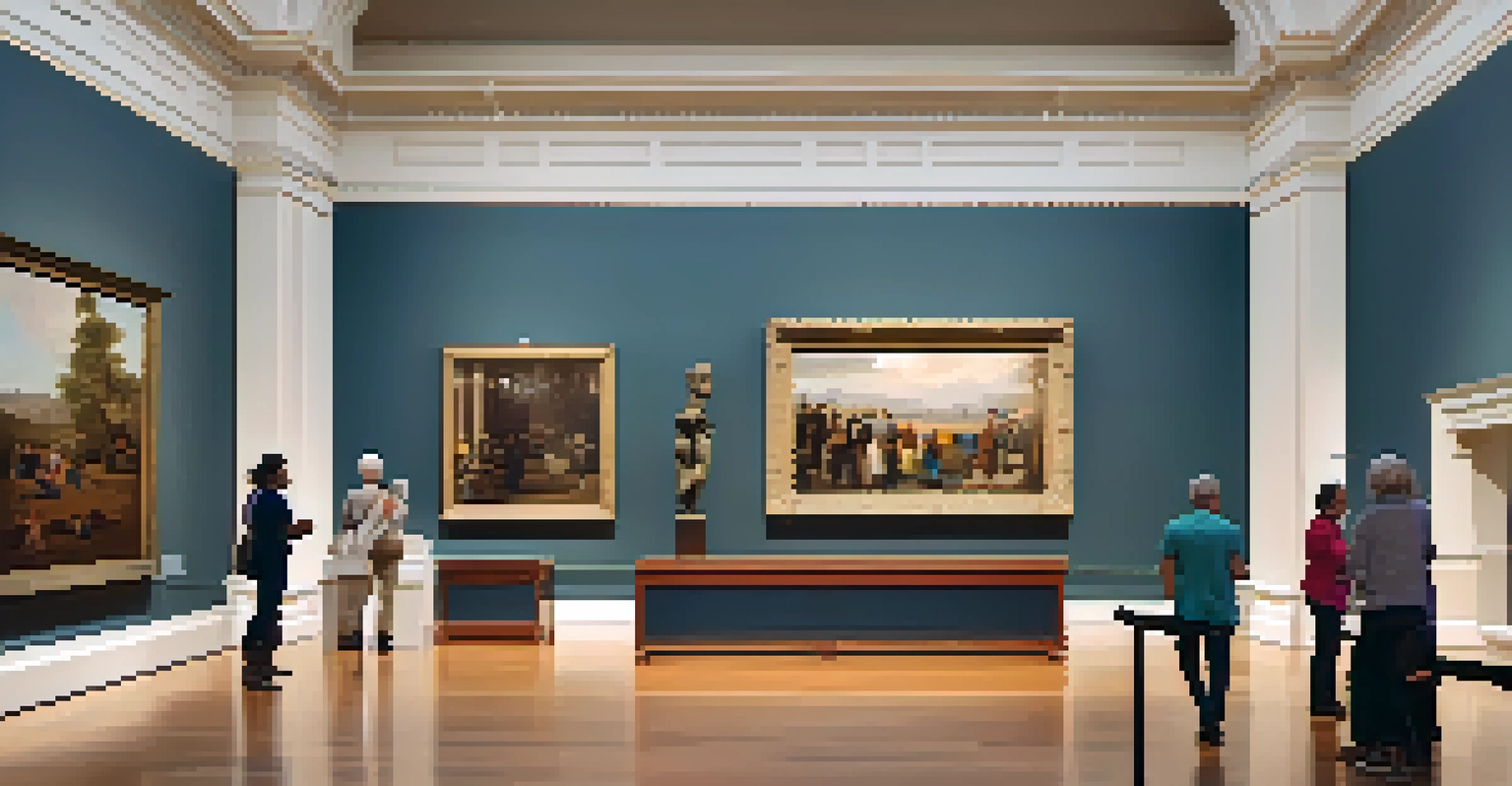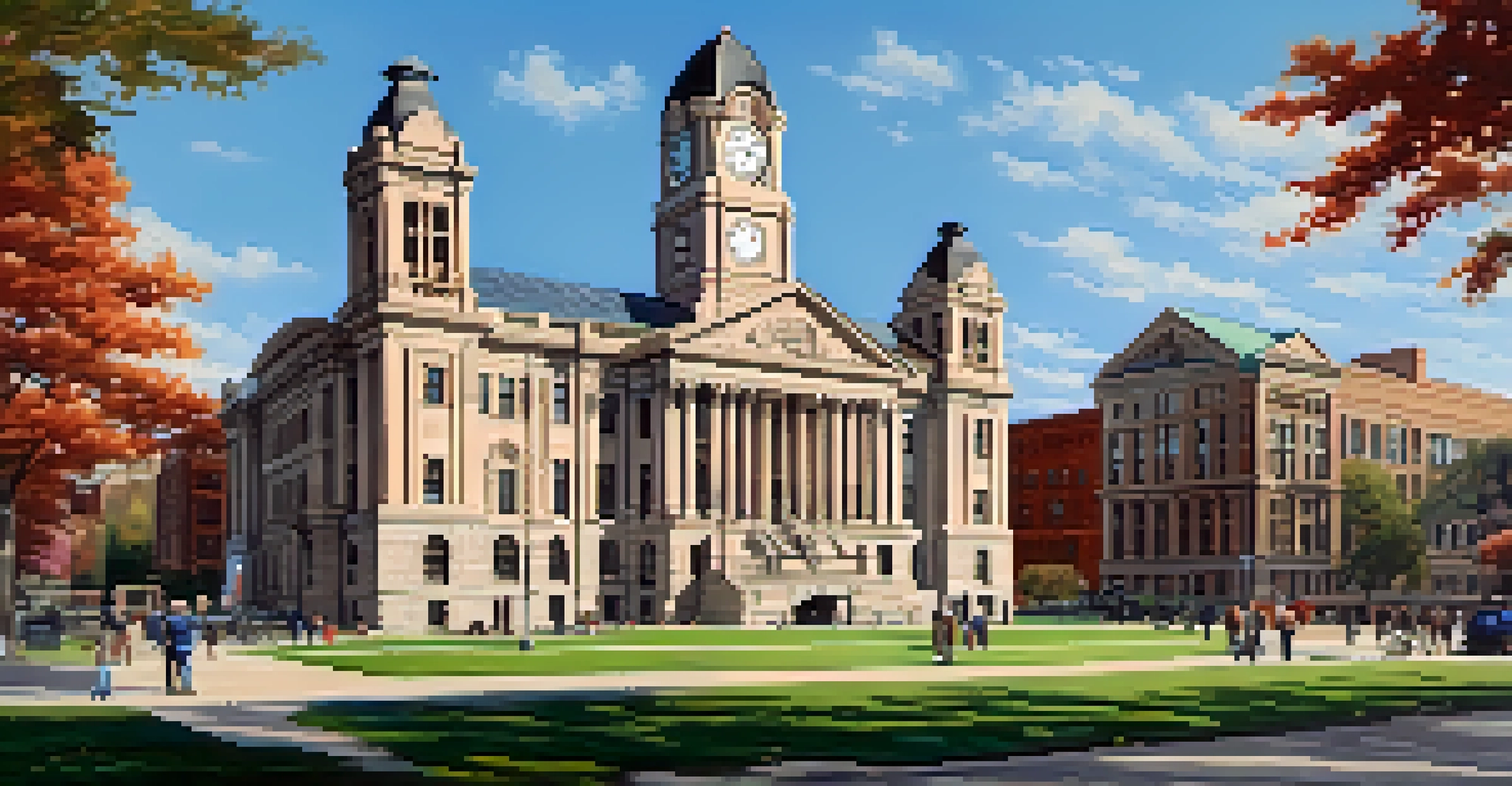Historic Architecture: Newark’s Iconic Buildings

An Overview of Newark’s Architectural Heritage
Newark, New Jersey, is a city rich in history and architectural diversity. From grandiose structures to hidden gems, Newark's buildings tell stories of its past. The architectural styles range from Gothic Revival to Art Deco, showcasing the city’s evolution over centuries.
Architecture is the learned game, correct and magnificent, of forms assembled in the light.
Walking through Newark is like flipping through a history book, with each building offering a glimpse into the era it represents. Notably, the city rose to prominence during the industrial revolution, which influenced its architectural landscape significantly. Each structure reflects the dreams and ambitions of the time, adding layers to Newark's identity.
By exploring Newark’s architecture, one can appreciate not just the aesthetics but also the cultural shifts. The buildings are a testament to the creativity and resilience of the community, making it a fascinating subject for both locals and visitors alike.
The Iconic Prudential Building: A Newark Landmark
When you think of Newark, the Prudential Building likely comes to mind. Completed in 1930, this Art Deco masterpiece stands as a symbol of the city’s financial prowess. Its distinctive tower, often referred to as the 'Rock of Gibraltar,' is a recognizable feature of Newark’s skyline.

The Prudential Building not only houses the headquarters of Prudential Financial but also serves as a historic site. Its design elements, such as the ornate limestone façade and striking geometric patterns, reflect the grandeur of the era. This structure is not just a workplace; it is a showcase of architectural innovation and a reminder of Newark's significance in the business world.
Newark's Diverse Architectural Styles
Newark showcases a rich tapestry of architectural styles, reflecting its historical evolution from Gothic Revival to Art Deco.
Visitors can admire the building from various angles, but the best views are from nearby parks and streets. This landmark is more than just a building; it represents the city’s resilience and the role of Newark in shaping American industry.
The Beautiful Newark Museum of Art
The Newark Museum of Art is not only a cultural hub but also an architectural treasure. Originally built as a mansion in the early 1900s, the museum has expanded to include various galleries and exhibitions. Its blend of modern and classic designs showcases Newark’s commitment to the arts.
A building has integrity just like a man. And just as seldom.
The museum features a stunning collection of American art, decorative arts, and even Tibetan art, making it a unique destination. The architecture itself is thoughtfully integrated with the exhibits, allowing visitors to enjoy both art and design in harmony. Walking through its halls feels like a journey through time and culture.
Beyond its impressive collections, the museum frequently hosts events and community programs, making it a lively spot in the city. It’s a perfect example of how historic architecture can be repurposed to serve contemporary needs while preserving the past.
The Historic Essex County Courthouse
The Essex County Courthouse is a striking example of Romanesque architecture. Completed in 1907, it features intricate stone carvings and a magnificent clock tower that dominates the landscape. This building is not just a place of justice; it’s a work of art that reflects the grandeur of the early 20th century.
The courthouse is often praised for its detailed craftsmanship, including stained glass windows and decorative terra cotta. Its design not only serves a functional purpose but also aims to inspire awe and respect within the judicial system. This architectural gem highlights Newark’s commitment to creating public spaces that are both beautiful and purposeful.
Prudential Building: A City Icon
The Prudential Building symbolizes Newark's financial strength and architectural innovation, standing as a historic landmark since 1930.
Visitors to the courthouse can appreciate its exterior beauty, but guided tours often reveal the fascinating stories behind its construction and design. The Essex County Courthouse stands as a reminder of the city's historical significance in the legal landscape of New Jersey.
The Art Deco Style of the Newark Public Library
The Newark Public Library is a stunning example of Art Deco architecture, completed in 1930. Its bold lines and geometric shapes are characteristic of the style, making it a prominent fixture in the city. The library not only serves as a repository of knowledge but also as a visual delight for architecture enthusiasts.
Inside, visitors are greeted with beautiful murals and elegant reading rooms that reflect the library's commitment to education and community. The design balances functionality and aesthetics, providing a welcoming atmosphere for all who enter. This space encourages exploration and learning, which is at the heart of its mission.
Moreover, the Newark Public Library often hosts events and programs that engage the community. This makes it more than just a building; it’s a vibrant center for culture and education, showcasing how historic architecture can adapt to modern needs.
The Historic Ironbound District: A Cultural Mosaic
The Ironbound District is a vibrant neighborhood known for its rich cultural heritage and historic architecture. With its mix of old warehouses and brick buildings, this area tells the story of Newark's industrial past and its evolution into a bustling community. The architecture reflects the diverse influences that have shaped the area over the years.
As you stroll through the Ironbound, you’ll notice how the buildings have been repurposed into restaurants, shops, and galleries, each adding to the district's charm. The historic facades contrast beautifully with the lively atmosphere, making it a popular destination for both locals and tourists. This blend of old and new creates a unique character that is quintessentially Newark.
Ironbound District's Cultural Charm
The Ironbound District is a vibrant blend of historic architecture and diverse cultures, making it a lively hub for community life and culinary experiences.
The Ironbound is also celebrated for its culinary scene, with eateries offering flavors from around the globe. This cultural mosaic is a testament to Newark’s welcoming spirit, showcasing how historic architecture can serve as a backdrop for community life and interaction.
The Grace Church: A Gothic Revival Masterpiece
Grace Church is an exquisite example of Gothic Revival architecture, completed in the late 19th century. Its towering spires and intricate stained glass windows create a breathtaking silhouette against the Newark skyline. This church is not only a place of worship but also an architectural landmark that draws visitors from all over.
The interior of Grace Church is equally stunning, with vaulted ceilings and ornate woodwork that reflect the craftsmanship of the period. This serene space offers a moment of reflection amidst the bustling city, inviting everyone to appreciate its beauty. The church’s design is a reminder of the spiritual and artistic aspirations of its time.

Grace Church also plays an active role in the community, hosting various events and services that bring people together. Its blend of history, artistry, and community engagement makes it a cherished part of Newark's architectural landscape.